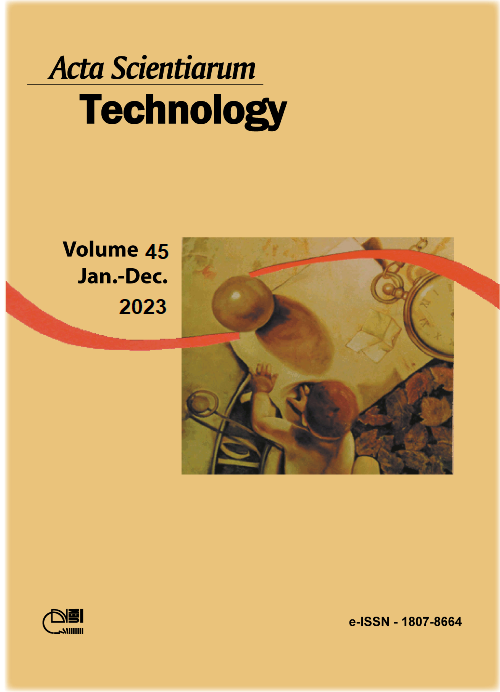Evaluation of feeding molar rate in mini fixed bed reactor for methanol steam reforming with pre-optimized composition of CuO/ZnO/Al2O3 catalyst
DOI:
https://doi.org/10.4025/actascitechnol.v45i1.60830Keywords:
fuel cells; heterogeneous catalysis; CuO/ZnO/Al2O3 catalyst in composition optimized; fixed bed reactor.Abstract
Hydrogen gas is an ideal fuel due to its higher calorific value among fuels and minimal environmental impact on their energy applications. However, the high cost around high reactivity, explosion risks and extremely low energy density, make it unfeasible to be used as fuel in large quantities scale. There are some possibilities to circumvent these limitations, including obtaining and converting energy through fuel cells, which is very promising. Research in this field has been summarized in recent decades, motivated by the environmental problems faced due to the dependence on non-renewable energy matrices. From this, this study aimed to improve the steam methanol reforming using CuO/ZnO/Al2O3 catalyst. The catalyst was characterized by atomic absorption spectroscopy, N2 physisorption and XRD. Catalytic tests were carried out in a laboratory scale fixed bed reactor at 300°C, atmospheric pressure and in differential conditions (methanol conversion < 10%); a previous run for catalyst synthesis validation in relation to the results obtained in the literature for the same conditions was evaluated. Subsequently, it was found that the thermal degradation of methanol at 300°C without the presence of the catalyst was negligible, and then operational conditions were established to obtain methanol conversions lower than 10%. Then, the initial deactivation of the catalyst over 31h. Also identifying the stability after 7 h in reaction with average conversion into 9.7% of methanol, showing high stability, in addition to good reproducibility on the part of synthesis in optimal composition. Then, experiments were carried out for the molar ratios 2:1 and 4:1 with methanol conversions of 15.5% and 6.6%, respectively. Note that performing the average of the 4:1 and 2:1 methanol conversion in 14.6% obtained at indicating that the upper boundary molar ratios (4:1) compensates for the conversion reduction in 2:1, achieving a result superior to the reference 3:1.
Downloads
Downloads
Published
How to Cite
Issue
Section
License
DECLARATION OF ORIGINALITY AND COPYRIGHTS
I Declare that current article is original and has not been submitted for publication, in part or in whole, to any other national or international journal.
The copyrights belong exclusively to the authors. Published content is licensed under Creative Commons Attribution 4.0 (CC BY 4.0) guidelines, which allows sharing (copy and distribution of the material in any medium or format) and adaptation (remix, transform, and build upon the material) for any purpose, even commercially, under the terms of attribution.
Read this link for further information on how to use CC BY 4.0 properly.











8.png)




